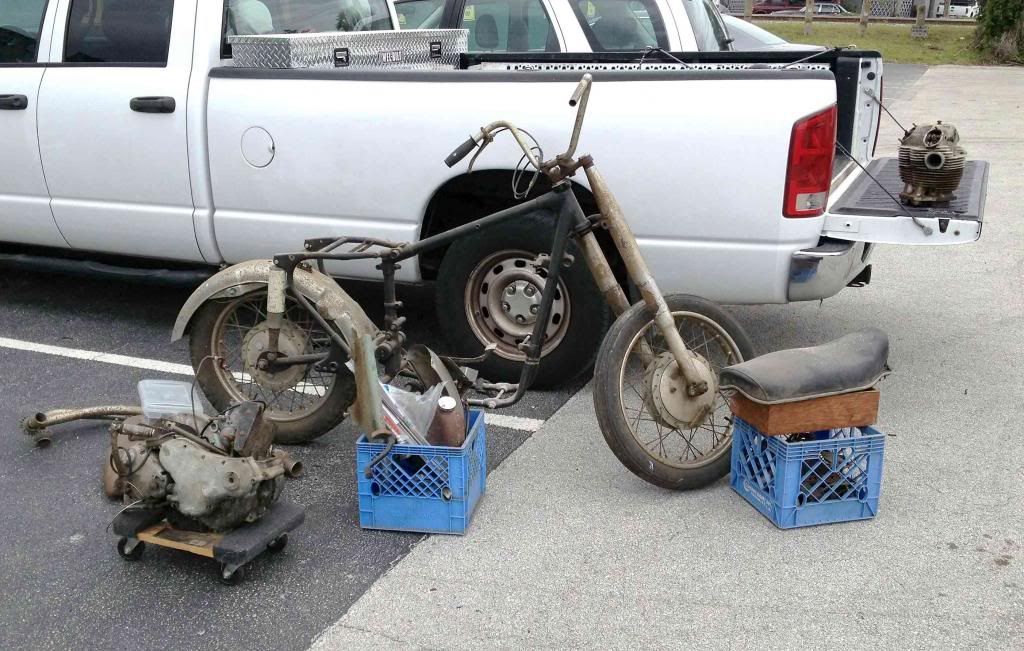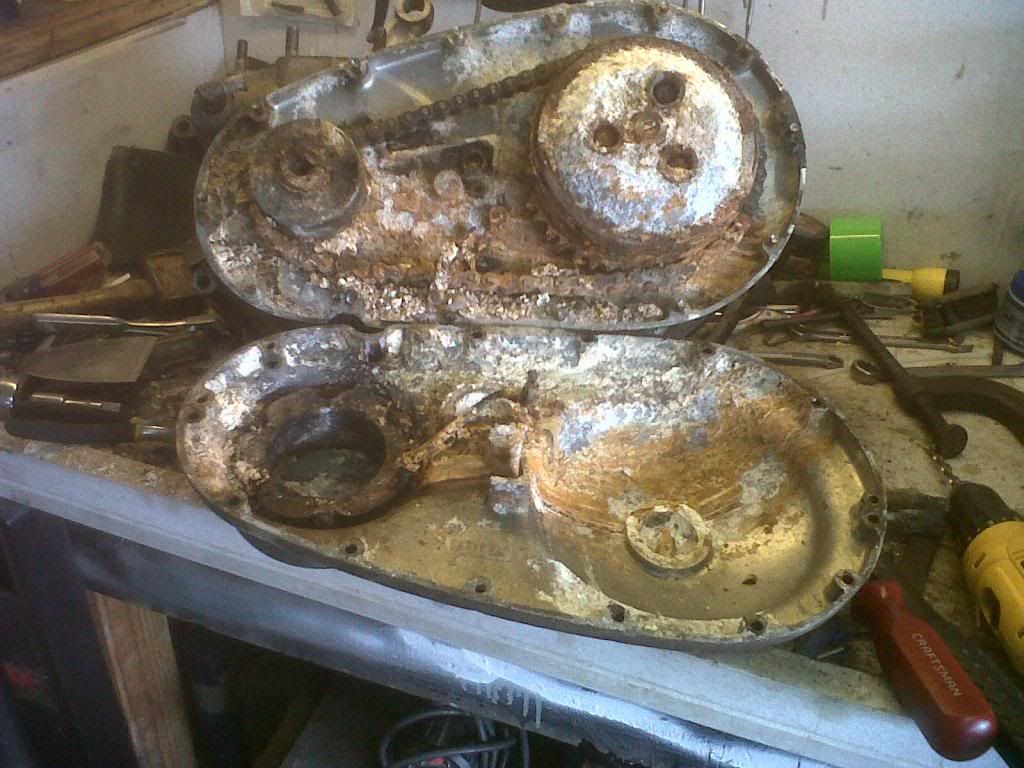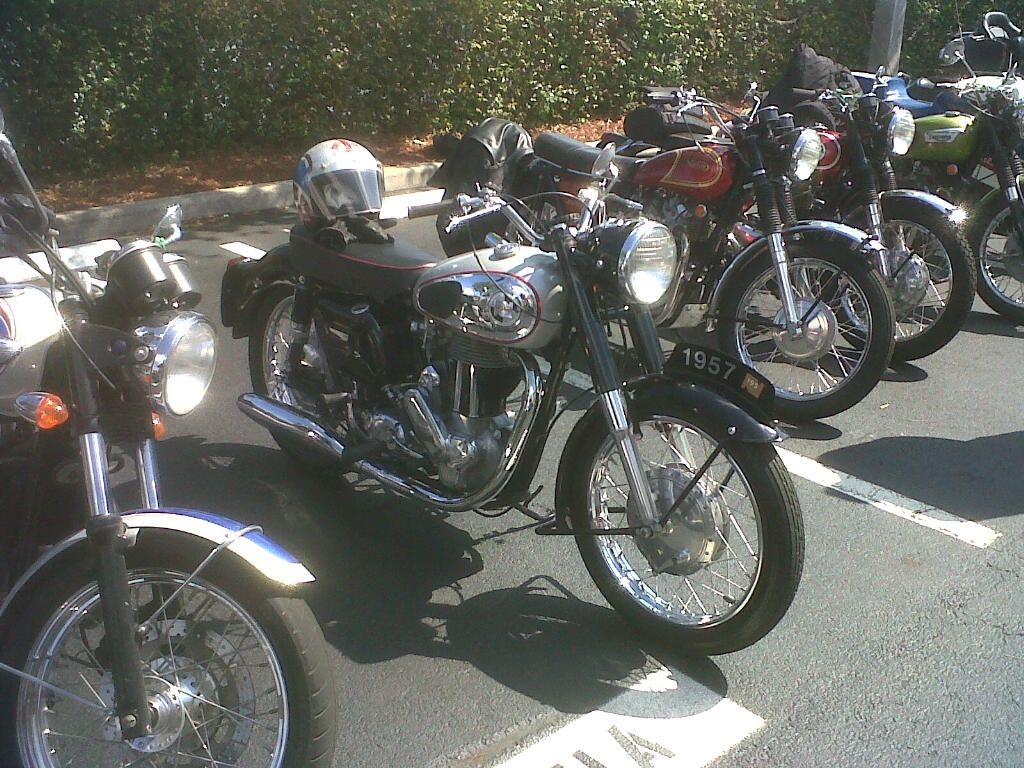New member here. I just picked up a late '67 G15CS, G15CS/123594, actually titled as a '68. The machine is mostly complete, with matching numbers on the frame and engine. Gearbox has a 5-digit serial, as I've seen on other 67-68 AMC bikes.
I've got some questions about this particular bike.
1)The chain guard is chrome, rather than black. I was under the impression only M2s and some CSRs had chrome chain guards
2)The rear mudguard looks like an M2 mudguard, except bobbed a bit in the back. the main section is two pieces, lapped and welded just ahead of the rear of the seat. There are at least ten smaller pieces welded to this main assembly - reinforcing plates at attachment points, a reinforcement spot-welded to the inside rear of the mudguard where it had been 'bobbed', side gussets for hand rail attachment, even a channel for the tail light wires. The whole assembly was chromed. The seat has a tab at the back, matching a bolt in the mudguard. I assume this type of mudguard would not have a loop, relying on the seat and two handrails (lifting rails?) for rear support. Front attachment appears to be a clip bracket over a frame cross member, and two tabs at the front (broken off) that must attach to the frame via brackets. Has anyone seen this type of fender?
More about the bike:
The front mudguard and stays are missing. I would assume a chrome front to match the rear, similar to my Ranger. Headlight and ears are missing - previous owner had converted to a Bates headlight mounted to the lower yoke via the pinch bolts. Fuel tank is the 2.4 gallon with the bumps for the badges and the quick-release cap. Tool box is missing. Tail lamp assembly was replaced with a small round lens in an alloy housing. I think this bike would get the '67-style black steel assembly, rather than the '68-style alloy piece. I've searched the web for late CS pictures, but the only ones that sort of jibe with what I've got are ape hanger CSRs. Could be that a PO installed these items, or these items were thrown on the bike at the factory to push them out the door - I know only a few hundred were built after this one.
Any help in finding out about this bike would be greatly appreciated
Here's a picture:

Bike is in better shape and more complete than my Ranger was, so I feel confident I can do it justice. The fender is just placed on the tire in this pic, and some pieces are not shown. A P11A seat, fender and loop are also in the picture - thrown in for good measure.



